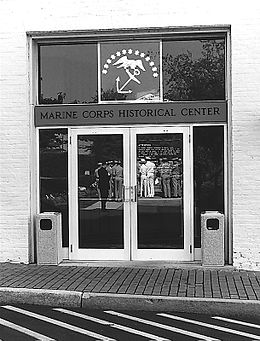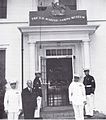
The commandant of the Marine Corps (CMC) is normally the highest-ranking officer in the United States Marine Corps and is a member of the Joint Chiefs of Staff. The CMC reports directly to the secretary of the Navy and is responsible for ensuring the organization, policy, plans, and programs for the Marine Corps as well as advising the president, the secretary of defense, the National Security Council, the Homeland Security Council, and the secretary of the Navy on matters involving the Marine Corps. Under the authority of the secretary of the Navy, the CMC designates Marine personnel and resources to the commanders of unified combatant commands. The commandant performs all other functions prescribed in Section 8043 in Title 10 of the United States Code or delegates those duties and responsibilities to other officers in his administration in his name. As with the other joint chiefs, the commandant is an administrative position and has no operational command authority over United States Marine Corps forces.
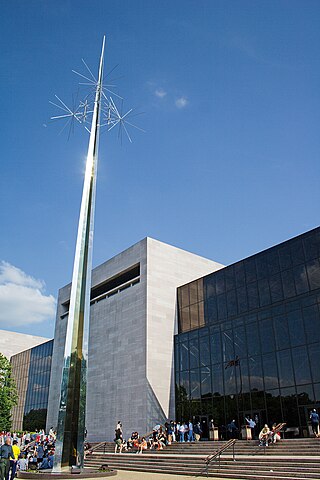
The National Air and Space Museum of the Smithsonian Institution, also called the Air and Space Museum, is a museum in Washington, D.C., US. It was established in 1946 as the National Air Museum and opened its main building on the National Mall near L'Enfant Plaza in 1976. In 2018, the museum saw approximately 6.2 million visitors, making it the fifth most visited museum in the world, and the second most visited museum in the United States. In 2020, due to long closures and a drop in foreign tourism caused by the COVID-19 pandemic, museum attendance dropped to 267,000. The museum contains the Apollo 11 Command Module Columbia, the Friendship 7 capsule which was flown by John Glenn, Charles Lindbergh's Spirit of St. Louis, the Bell X-1 which broke the sound barrier, the model of the starship Enterprise used in the science fiction television show Star Trek: The Original Series, and the Wright brothers'Wright Flyer airplane near the entrance.

The Washington Navy Yard (WNY) is the former shipyard and ordnance plant of the United States Navy in Southeast Washington, D.C. It is the oldest shore establishment of the U.S. Navy.

The National Museum of Natural History is a natural history museum administered by the Smithsonian Institution, located on the National Mall in Washington, D.C., United States. It has free admission and is open 364 days a year. In 2021, with 7.1 million visitors, it was the eighteenth most visited museum in the world and the second most visited natural history museum in the world after the Natural History Museum in London. Opened in 1910, the museum on the National Mall was one of the first Smithsonian buildings constructed exclusively to hold the national collections and research facilities. The main building has an overall area of 1.5 million square feet (140,000 m2) with 325,000 square feet (30,200 m2) of exhibition and public space and houses over 1,000 employees.

Julian Constable Smith was a United States Marine Corps general who served for 37 years, including service in Nicaragua and during World War II's Battle of Tarawa.

The landing craft, vehicle, personnel (LCVP) or Higgins boat was a landing craft used extensively by the Allied forces in amphibious landings in World War II. Typically constructed from plywood, this shallow-draft, barge-like boat could ferry a roughly platoon-sized complement of 36 men to shore at 9 knots (17 km/h). Men generally entered the boat by climbing down a cargo net hung from the side of their troop transport; they exited by charging down the boat's lowered bow ramp.

Leonard Fielding Chapman Jr. was a United States Marine Corps general who served as the 24th Commandant of the Marine Corps from 1968 to 1972. He was a World War II combat veteran, decorated for his actions in the Battle of Peleliu and the Battle of Okinawa. He retired from the Marine Corps after 37 years of service. In retirement, he served as the Commissioner of the Immigration and Naturalization Service.
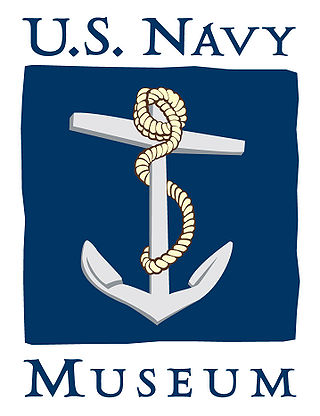
The National Museum of the United States Navy, or U.S. Navy Museum for short, is the flagship museum of the United States Navy and is located in the former Breech Mechanism Shop of the old Naval Gun Factory on the grounds of the Washington Navy Yard in Washington, D.C., United States.

Headquarters Marine Corps (HQMC) is a headquarters staff within the Department of the Navy which includes the offices of the Commandant of the Marine Corps, the Assistant Commandant of the Marine Corps and various staff functions. The function, composition, and general duties of HQMC are defined in Title 10 of the United States Code, Subtitle C, Part I, Chapter 506.
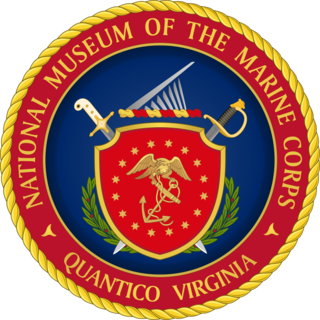
The National Museum of the Marine Corps is the historical museum of the United States Marine Corps. Located in Triangle, Virginia near MCB Quantico, the museum opened on November 10, 2006, and is now one of the top tourist attractions in the state, drawing over 500,000 people annually.

Randolph Carter Berkeley was a United States Marine Corps major general who received the Medal of Honor for his actions during the United States occupation of Veracruz.

John Revell "Jack" Dailey is a retired United States Marine Corps four-star general who served as Assistant Commandant of the Marine Corps (ACMC) and Chief of Staff from 1990 to 1992, Acting Associate Deputy Administrator of the National Aeronautics and Space Administration (NASA) from 1992 to 1999; and director of the National Air and Space Museum (NASM) from 2000 to 2018.

Paul Edward Garber was the first head of the National Air Museum of the Smithsonian Institution, in Washington, D.C. Through his work and effort, the most complete collection of historical aircraft in the world was gathered and preserved. It contains the sole survivors of many interesting historical aircraft types.
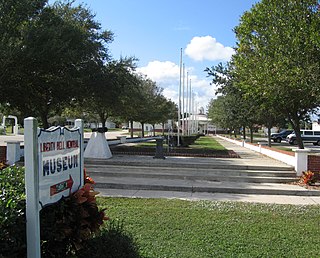
The Liberty Bell Memorial Museum is located at 1601 Oak Street, Melbourne, Florida in Wells Park and is located adjacent to Melbourne Military Memorial Park. The museum is free to enter, and is divided into two main components: The Rotunda of American History and Freedom Hall.

The Marine Corps Air-Ground Museum was located at Brown Field, Marine Corps Base Quantico, Quantico, Virginia. It housed a wide variety of historic Marine Corps vehicles/tanks, equipment, artillery pieces and aircraft to trace the evolution and significance of the Marine Air-Ground Team. It also contained several pieces of foreign equipment, such as a Soviet SU-76M self-propelled howitzer. The museum closed on November 15, 2002, during the establishment of the National Museum of the Marine Corps.

The United States Naval Academy Museum is a public maritime museum in Annapolis, Maryland, United States. A part of the United States Naval Academy, it is located at Preble Hall within the Academy premises. The museum has an area of 12,000 square feet (1,100 m2) with four galleries. It is currently headed by Director CDR Claude Berube, PhD USNR.

The 19th Marine Regiment was a composite engineer regiment of the United States Marine Corps subordinate to the 3rd Marine Division. It existed from September 1942 until September 1944. In December 1943 there was a large change of command in the Regiment. Marine engineer regiments were eventually disbanded in favor of independent engineering battalions within the parent Marine divisions.
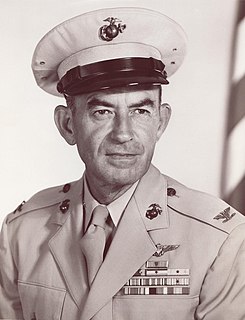
Marion Milton Magruder was an officer in the United States Marine Corps, and a pioneer in Radar Intercept Night Fighting. He was the first commanding officer of Marine aircraft squadron VMF(N)-533, then known as "Black Mac's Killers", and led that squadron during the Battle of the Marshall Islands and Battle of Okinawa in World War II.

The Marine Raider Museum is located at Raider Hall, 24191 Gilbert Road, Camp Barrett, Marine Corps Base Quantico, Quantico, Virginia. It contains exhibits related to Marine Raiders. It was originally located in Richmond, Virginia, but was moved to its current location in 2005. In 1997, the museum won the prestigious Colonel John H. Magruder III Award from the Marine Corps Heritage Foundation.
